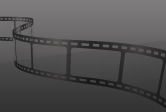[Edwards] offers a new model for creating things that can be hopeful, helpful—and commercially viable.
Most things we create will not matter. This book is about creating things that do, from a master innovator who brings science and art together in his cutting edge labs.
Art and science are famous opposites. Contemporary innovation mostly keeps them far apart. But in this book, David Edwards-world-renowned inventor; Harvard professor of the practice of idea translation; creator of breathable insulin, edible food packaging, and digital scents-reveals that the secret to creating very new things of lasting benefit, including innovations we will need to sustain human life on the planet, lies in perceiving art and science as one.
Here Edwards shares how he discovered a way of creating that transcends disciplines and incorporates the principles of aesthetics. He introduces us to cutting-edge artists, musicians, architects, physicists, mathematicians, engineers, chefs, choreographers, and novelists (among others) and uncovers a three-step cycle they all share in creating things that durably matter. This creator cycle looks unlike what we associate with game-changing innovation today, and aligns the most expressive art and the most revolutionary science in a radical reimagining of how we live. David Edwards and the innovators he profiles belong to an emerging grassroots renaissance flourishing in special environments that we all can make in our schools, companies and homes.
Creating Things That Matter is a book for anyone wondering what tomorrow might be, and at last half believing that what they do can make a difference.
Most things we create will not matter. This book is about creating things that do, from a master innovator who brings science and art together in his cutting edge labs.
Art and science are famous opposites. Contemporary innovation mostly keeps them far apart. But in this book, David Edwards-world-renowned inventor; Harvard professor of the practice of idea translation; creator of breathable insulin, edible food packaging, and digital scents-reveals that the secret to creating very new things of lasting benefit, including innovations we will need to sustain human life on the planet, lies in perceiving art and science as one.
Here Edwards shares how he discovered a way of creating that transcends disciplines and incorporates the principles of aesthetics. He introduces us to cutting-edge artists, musicians, architects, physicists, mathematicians, engineers, chefs, choreographers, and novelists (among others) and uncovers a three-step cycle they all share in creating things that durably matter. This creator cycle looks unlike what we associate with game-changing innovation today, and aligns the most expressive art and the most revolutionary science in a radical reimagining of how we live. David Edwards and the innovators he profiles belong to an emerging grassroots renaissance flourishing in special environments that we all can make in our schools, companies and homes.
Creating Things That Matter is a book for anyone wondering what tomorrow might be, and at last half believing that what they do can make a difference.

Creating Things That Matter: The Art and Science of Innovations That Last

Creating Things That Matter: The Art and Science of Innovations That Last
FREE
with a B&N Audiobooks Subscription

Editorial Reviews
Product Details
| BN ID: | 2940169555479 |
|---|---|
| Publisher: | Brilliance Audio |
| Publication date: | 10/16/2018 |
| Edition description: | Unabridged |
Videos

